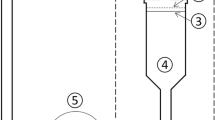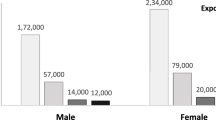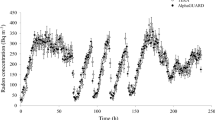Abstract
Anderson, Mayneord and Turner1 have directed attention to the variation of atmospheric radon content. It may be of interest to note that similar observations were made here during the four months, November–February, 1953–54. Samples were collected daily from air drawn through four-inch filter paper TFA-41. The activity of the papers was determined by inserting them directly into an ionization chamber with a vibrating-reed type amplifier and an inked pen recorder. A second set of observations was obtained by the more laborious counting of beta-emission with a mica window counter.
This is a preview of subscription content, access via your institution
Access options
Subscribe to this journal
Receive 51 print issues and online access
$199.00 per year
only $3.90 per issue
Buy this article
- Purchase on Springer Link
- Instant access to full article PDF
Prices may be subject to local taxes which are calculated during checkout
Similar content being viewed by others
References
Nature, 174, 424 (1954).
Author information
Authors and Affiliations
Rights and permissions
About this article
Cite this article
THOMAS, C., GAINER, M. & BALL, T. Relation of Radon to Non-active Air Contamination. Nature 175, 732–733 (1955). https://doi.org/10.1038/175732b0
Issue Date:
DOI: https://doi.org/10.1038/175732b0
Comments
By submitting a comment you agree to abide by our Terms and Community Guidelines. If you find something abusive or that does not comply with our terms or guidelines please flag it as inappropriate.



